- Thua Thien Hue promotes sending workers to work abroad, contributing to hunger eradication and poverty reduction
- Striving to escape poverty with both will and determination
- Solid skills to escape poverty sustainably
- Promoting the effectiveness of policy capital to contribute to hunger eradication and poverty reduction
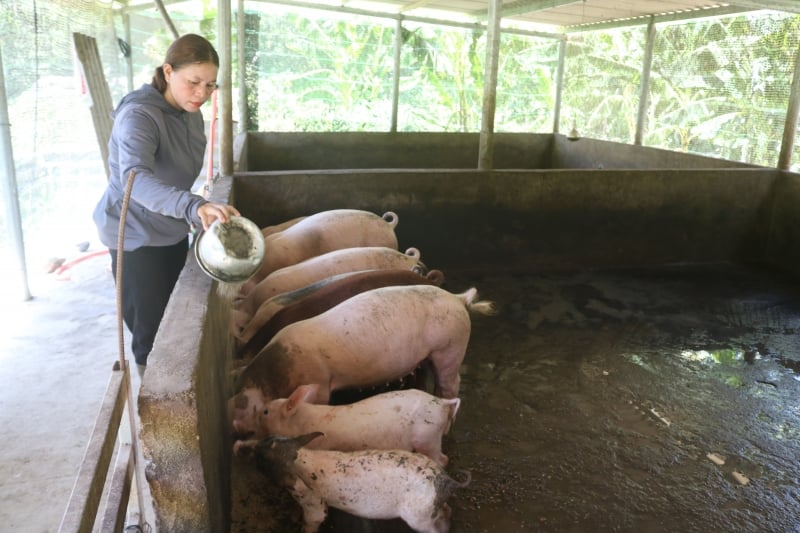
Livestock model helps people in the highlands of Thua Thien Hue have income and stabilize their lives
Thuong Long and Huong Huu are the two communes with the highest poverty rate in the mountainous district of Nam Dong, Thua Thien Hue province. According to the survey results, the total number of poor households at the end of 2022 in Thuong Long commune was 153 households, accounting for 20.61%; Huong Huu commune had 168 poor households, accounting for 21.66%. The majority of people living in these two communes are ethnic minorities, of which the Co Tu people account for the majority. People here mainly engage in agricultural, forestry and small-scale livestock production. The qualifications and skills of workers are still limited, most of them are self-employed, so their income is low and unstable, leading to many difficulties in life.
To help people in Huong Huu, Thuong Long as well as the whole district in general improve their labor skills and develop the economy , in recent years, the Nam Dong district government has implemented many flexible solutions in vocational training, especially vocational training for poor households, near-poor households, newly escaped poverty households, and ethnic minority households. Through vocational training courses, people here have confidently invested in developing their livelihoods, creating jobs for themselves or finding suitable jobs, and increasing their income.
Visiting the closed pig farm of Ms. Ngoc Thi Dao's family (35 years old, Co Tu ethnic, in village 5, Thuong Long commune), we saw the pride of the leaders and teachers of the Nam Dong District Vocational Education and Training Center for Continuing Education in front of the model developed by the students. According to the Center's leaders, Ms. Dao is one of the excellent students of the elementary vocational class on pig and chicken breeding and disease prevention and treatment organized by the unit. Ms. Dao said that she used to raise pigs in cages but did so on a small scale because she did not have the techniques for raising and preventing and treating livestock and poultry diseases. After completing the course, Ms. Dao boldly borrowed capital from the Social Policy Bank to build a farm and expand the scale of herd raising. Currently, her family has a closed pig farm, with 4 sows, breeding pigs and commercial pigs. Recently, Ms. Dao's family farm has sold 2 litters of pigs, bringing in a total revenue of more than 110 million VND. “After deferring expenses, in addition to income, my family also has profits from the sows and breeding pigs. It can be said that the training course has helped me improve my livestock raising skills, disease prevention and treatment techniques for pigs and become more confident in expanding the model. I hope that more people will be supported to learn a trade to open farms, expand the livestock model, production, and develop the family economy,” Ms. Dao shared.
Like Ms. Dao, Mr. A Lang A Phut (48 years old, Co Tu ethnic, in village 6, Thuong Long commune, Nam Dong district), after completing the basic training course in animal husbandry, invested in a Tam Hoang chicken farming model. Mr. A Phut said that from his own capital, he currently only has 300 chickens for testing and if effective, he will invest in expanding.
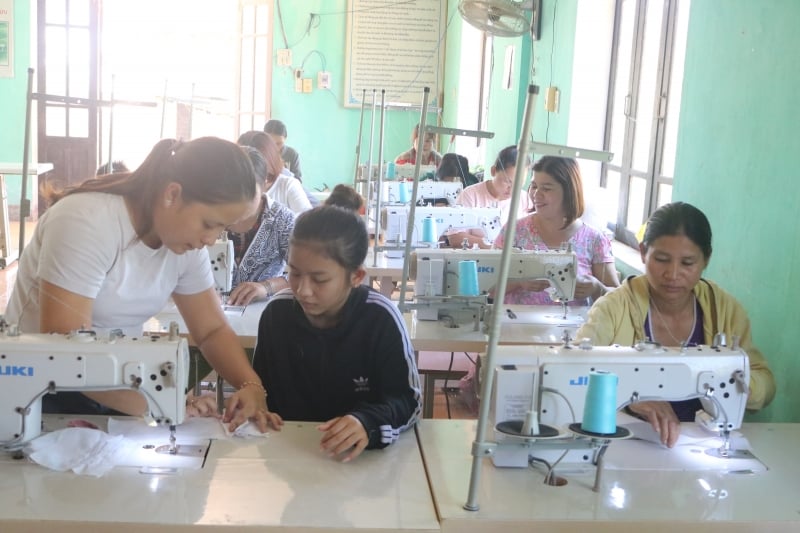
Sewing training class for workers in Huong Huu commune, Nam Dong district, Thua Thien Hue province
Visiting the sewing training class at the Cultural House of Village 5, organized by the Center for Continuing Education - Vocational Training of Nam Dong district in coordination with the People's Committee of Huong Huu commune, we also noticed the focused and serious atmosphere of all the students. It is known that 100% of the students in the class are from poor households, near-poor households, and ethnic minorities living in Huong Huu commune. Ms. Ho Thi Beo (30 years old, Co Tu, in Village 5, Huong Huu commune), said that she is married and has 2 small children. However, both her husband and she do not have professional qualifications, do not have stable jobs, in addition to seasonal farming, they also work as hired laborers exploiting acacia, with a daily wage of 200,000 VND/person. Or in the case of student Ho Thi Thach (35 years old, Co Tu, in Village 5, Huong Huu commune) also does not have a stable job and income. To raise their children, in addition to 1 sao of rice field and 200 rubber trees, Ms. Thach and her husband also work as rubber tappers for others. Through research, most of the students participating in the course hope to find a job or have a stable job in their hometown to increase their income and take care of their family and children.
Mr. Le To Huu - Deputy Director of the Center for Continuing Education and Vocational Training of Nam Dong district said that the unit is currently implementing vocational training support for policy beneficiaries of poor and near-poor households, ethnic minorities in the area according to Programs 1719 and 90, with 2 main occupations being industrial sewing and animal husbandry. In the first 6 months of 2023, the Center provided admission consultation, opened, and coordinated the opening of 6 elementary and under 3-month vocational training classes for 110 students, of which 35 students were recognized as graduates. Most students after the training course found jobs in the province, outside the province, created jobs locally or went to work abroad under contracts, thereby increasing their income.
According to the leader of the Department of Labor, Invalids and Social Affairs of Nam Dong district, implementing the National Target Programs, the district aims to accelerate the pace of poverty reduction, limit poverty relapse, reduce the gap in the rate of poor and near-poor households between regions and population groups; contribute to the implementation of economic growth targets, ensure social security, improve people's lives, and increase people's income. Nam Dong strives to reduce the overall poverty rate of the district to below 5% by 2025. To achieve the set goal, this mountainous district has had many key solutions, including promoting the development of vocational education, implementing vocational training policies, and providing job counseling and referrals for rural workers, especially the poor. In 2023 alone, Nam Dong strives to support vocational training for 550 or more workers, ensuring that 100% of workers in need of vocational training receive vocational training, especially workers from poor households and ethnic minority households in need of vocational training.
Source link







![[Photo] Prime Minister Pham Minh Chinh and Prime Minister of the Kingdom of Thailand Paetongtarn Shinawatra attend the Vietnam-Thailand Business Forum 2025](https://vphoto.vietnam.vn/thumb/1200x675/vietnam/resource/IMAGE/2025/5/16/1cdfce54d25c48a68ae6fb9204f2171a)







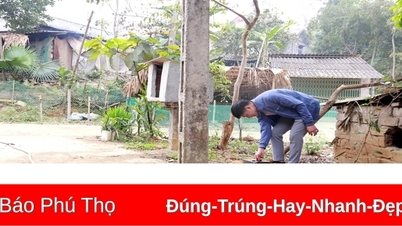


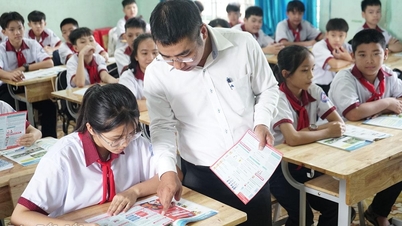

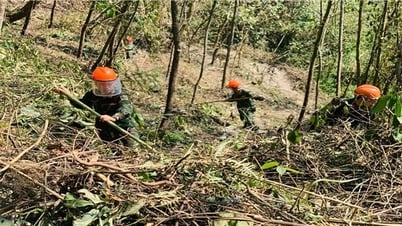
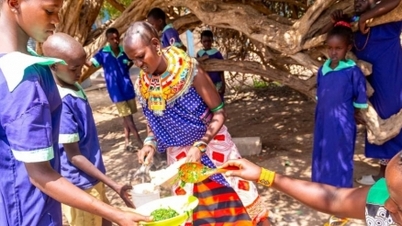








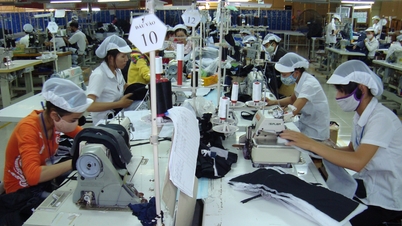

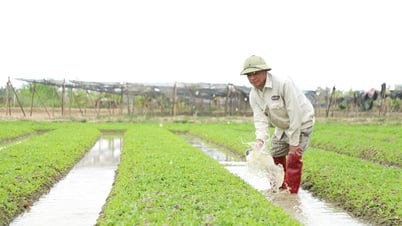

![[Photo] President Luong Cuong receives Prime Minister of the Kingdom of Thailand Paetongtarn Shinawatra](https://vphoto.vietnam.vn/thumb/1200x675/vietnam/resource/IMAGE/2025/5/16/52c73b27198a4e12bd6a903d1c218846)














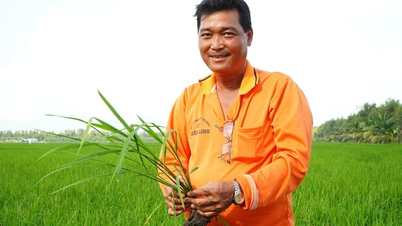

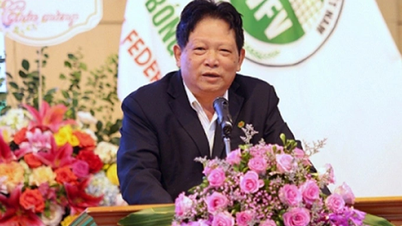








































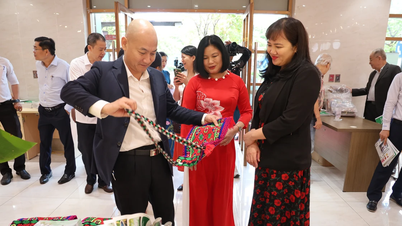



Comment (0)